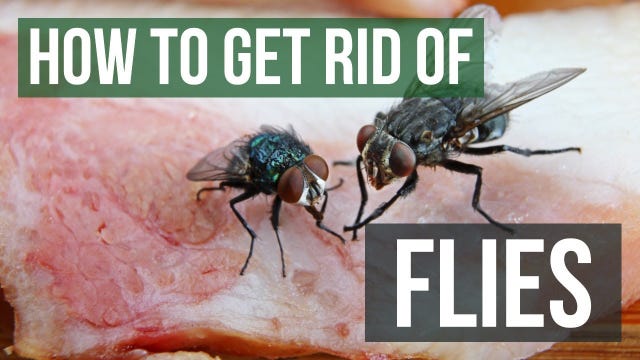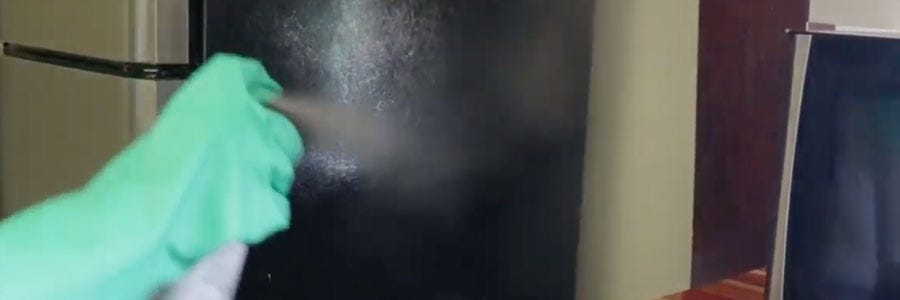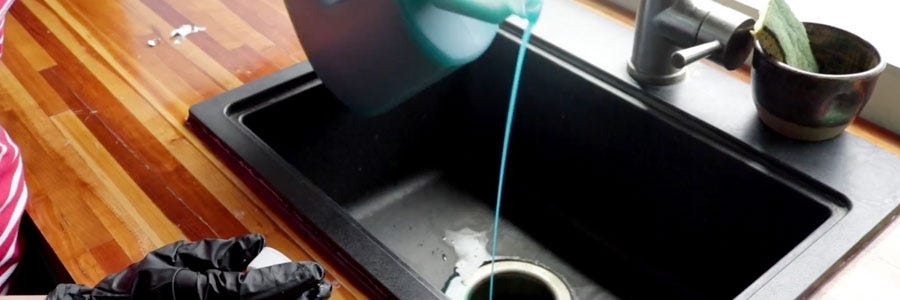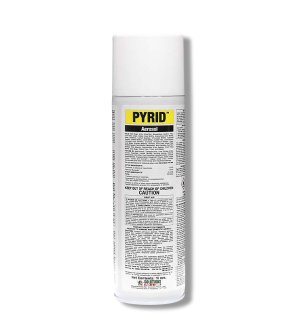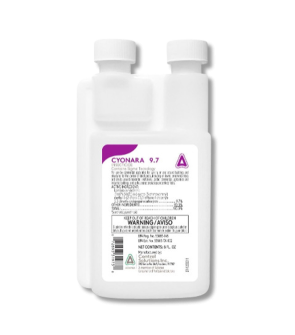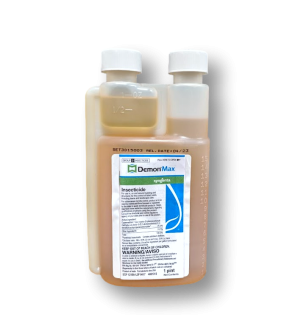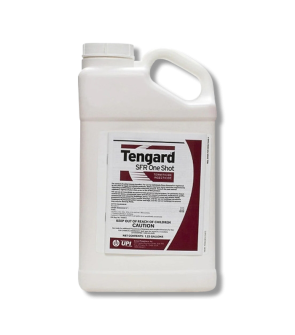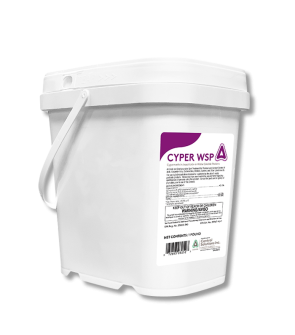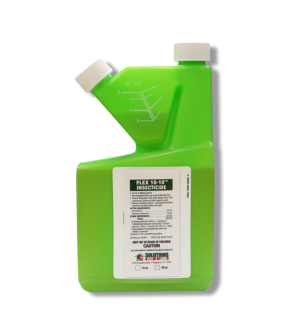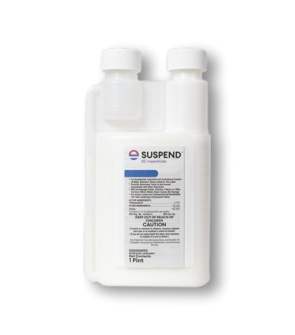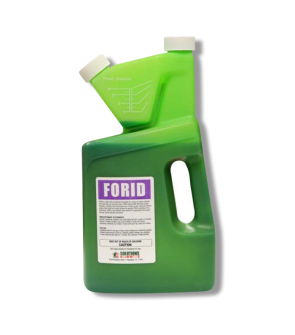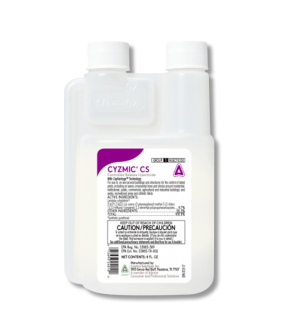Gain access to personalized product screening, the best pricing, rewards, and more!
Most Effective Products
Flies Control: How to Get Rid of Flies
This page is a general fly control guide. Using the products and methods suggested, you can control any fly species. The flies category pages give additional information on the different common species. Follow these guides and use the recommended products, and we guarantee 100% control over all fly species.
Flies have been bothersome insects to humans since the beginning of time. There are about 16,000 different species of fly, and that’s just in North America! Flies are an almost unavoidable pest and can be found in virtually every part of the world. The common Housefly is known as a filth fly because wherever there’s rotting food, terrible odors, and waste, a fly is bound to be there.
Because they are attracted to filth and garbage, flies can be a hazard to humans by spreading disease. Anywhere a fly lands, it leaves pathogens and bacteria that can transfer to your counters, plates, forks, knives, and food.
Fly infestations occur for many reasons. Cluster flies usually infest homes to escape winters and hide within your walls. House Flies and drain flies are attracted to decomposing materials, such as a garbage can, a clogged drain, or a hidden animal corpse.
When flies enter a home, they can often be very difficult to get rid of, and if given the chance to create offspring, things can get out of control quickly. By following our DIY guide below, you will know how to get rid of flies quickly using our tips and top-recommended professional products.
Identification
The tricky thing with fly treatment is that different fly species require different products and techniques, so it's vital to identify which fly you have. Misidentification can lead to using the wrong treatment products, which can waste time and money.
- No matter the fly type, they will have two pairs of wings, big eyes, and six legs. Besides noting the appearance, what helps is observing where you have been seeing the flies frequently.
- Indoors, you might see fungus gnats, house flies, drain flies, fruit flies, and cluster flies.
- If you see a large population of flies near your window on a warm winter's day, you're most likely dealing with fluster flies.
- You probably have fruit or house flies if the flies circle vegetables and fruits.
- If you see a fuzzy fly resembling a small moth, it is most likely a drain fly.
- If you see small flies near your potted plants, they are probably fungus gnats or phorid flies.
- The most common culprit outdoors is the blowfly. They are easy to identify, have green and blue iridescent bodies, and hover over garbage cans and feces. If you see any of these flies indoors, there might be an animal carcass nearby.
If you can identify your fly, you can go to one of our specific fly species pages to get more detailed advice on the treatment approach and what products to use. If you can't determine the exact species of fly you're dealing with, continue with this guide; it will cover both indoor and outdoor fly issues.
Inspection
Once you have identified that you are dealing with flies, you need to proceed with an inspection. Before you can treat your home, you need to know where the flies are coming from and what attracts them. During the inspection portion of this guide, you will look for fly activity and the conducive conditions that are generating the fly infestation.
Where to Inspect
Indoors, you'll want to look for flies in the kitchen, bathroom, living room, and windows. In the kitchen, look inside your fruit bowl and see where vegetables are located (potatoes, onions, and tomatoes are a source of fruit flies). Check the drains in these areas and floor drains if you're a business owner. Check the trash cans and garbage bins. Pet food and pet cages (hamsters, birds, etc.) should also be inspected.
Check out the outdoor areas, including the yard, near your walls, and the garbage bins that the city picks up. These areas could be breeding grounds for flies.
What To Look For
Indoors, look for areas that breed fly activity, such as trash, clogged drains, and decaying materials. Check the fruit bowl for rotten fruits. Check the bottoms of the garbage cans for leftover trash. Note if your drains are functioning properly. Check pet cages for feces.
Outdoors, you will look for pet droppings that have not been cleaned up, rotten wood, or compost piles attracting flies. If you've noticed a foul smell on your property, check for any possible animal carcasses. If you have located flies in any of these areas, this is where you will apply treatment.
Treatment
Now that you have confirmed fly activity, it's time to begin treatment. Remember to read all the labels on the products, follow the application instructions on these labels, and stay safe by wearing personal protective equipment (PPE).
Sanitation is key to successfully removing a fly infestation from your home. Start by cleaning up the filth sources that attract the flies in the first place. Once the house has been cleaned and the source attracting the flies has been disposed of, you can carry out an indoor treatment. You will use the following products: Pyrid Aerosol, Forid Gel Cleaner, Musca-Stik Fly Traps, Flex 10-10, and I.G. Regulator.
Combining these products will quickly eliminate the Fly population within the home and yard.
Step 1: Sanitize the Home
Sanitizing your home before treatment is essential for fly control. This will create preliminary control and will eliminate the sources of the infestation. To do this, you will need to clean your home and the materials that are attracting flies. You will use plastic containers and cleaning supplies.
Start by cleaning your kitchen and garbage can. Ensure no spills on counters or leftover trash are at the bottom of your garbage cans. Get rid of rotten or uneaten fruit (the main attractant of fruit flies). Seal fruits and vegetables in plastic containers.
Clean up after your pets in the yard and dispose of the droppings in your cat litter. Vacuum and mop your whole house to ensure there are no old spills attracting flies. In the yard, eliminate compost piles that might also attract flies.
Step 2: Capture Lingering Flies with Fly Traps
While most flies will leave after you've cleaned up your home, some will stick around. Capture these lingering flies using the Musca-Stik Fly Trap. Musca-Stik Traps are an insecticide-free trap that uses pheromones and a bright orange design to attract Flies directly to the trap, which is full of glue. Flies will become stuck and unable to escape.
To set up the Musca-Stik Trap, pour the pheromones packet into the catch basin at the end of the stick and place the trap high above where you have noted active flies. After the flies have filled the trap, you can easily dispose of it.
Step 3: Spray Pyrid Aerosol
Pyrid Aerosol is a pyrethrum-based insecticide that will quickly knock down any lingering flies. Before spraying, make sure all pets and people are out of the house and that no food-surfacing utensils are exposed. Put away all the items in your washing rack. Turn off your air conditioner and fans, and close doors and windows.
Apply Pyrid at the rate of 1 to 3 seconds per 1,000 cubic feet.
Start in the affected areas (kitchen, bathroom, garbage cans) by spraying toward the ceiling and making your way to the front of the house.
Do not let people or pets enter your home for at least 15 minutes. Ventilate your house after treatment, and wipe your kitchen counters.
Step 4: I.G. Regulator and Flex 10-10
Flex 10-10 is an insecticide concentrate that is great for treating flying insects. When combined with Martin's I.G. Regulator, it targets the undeveloped stages of flies (larval, pupal, and egg) that might be breeding indoors.
Mix I.G. Regulator with Flex 10-10 to treat flies indoors. In a gallon sprayer, mix 3.2 fl. oz. of Flex 10-10 in a gallon of water with 1 oz of I.G. Regulator to treat cracks and crevices, bookcases, surfaces, walls, and other areas where you have noticed flies.
Next, you will apply treatment to the exterior of your home by spraying three feet up and three out from the foundation, as well as windows, doors, eaves, and plumbing/electrical penetrations. Broadcast the mixture throughout the yard, contacting the lawn, landscaping, and ornamentals.
Step 5: Forid Drain Gel Cleaner
For flies flying around your sink drains, get rid of them using the Forid Drain Gel Cleaner. Forid is an organic microbial product that breaks down grease, organic material, and waste, eliminating their food sources and breeding grounds.
To use Forid, run hot water down the drain for a couple of minutes and then measure and pour 4 ounces of Forid into the affected drains.
Pour around the drain's outer edges. Repeat pouring Forid down the drains for 5 to 7 nights until there is no further fly activity.
Prevention
After you have eliminated the fly infestation, you need to enact preventative measures to ensure flies don't make a return. Here are some things you can do to prevent flies from returning.
- Practice good hygiene and regularly clean the house, taking out the garbage daily, picking up your pet's feces, and wiping your kitchen counters. Clean any spills immediately, and don’t let them sit for a while.
- Do not let the fruits rot away and attract possible flies.
- Reduce moisture in your home by addressing poor drainage around your structure inside and outside your home.
- Keep bathrooms clean, and do not let mold or mildew grow in the tub or shower area.
- Use caulk to seal any possible entry points into the structure, especially near windows and doors.
- Finally, Reapply the Flex 10-10 and Martin's IG Regulator mixture every 3 months to maintain the protective barrier around your home that will discourage flies from harboring the area.
Key Takeaways
What Are Flies?
- Flies are small flying insects that are annoying and a major health hazard because of the places they frequent. They normally surround garbage and waste, so when they come into contact with your yard, home, and especially your food, you could be at risk of catching an illness from them or worse.
How To Get Rid of Flies Indoors and Outdoors
- Sanitation is half the battle for getting rid of a fly infestation. Locate and remove the filth source, take out garbage, and thoroughly clean up before treatment.
- Indoors, combine Forid Drain Gel Cleaner, Musca-Stick Fly Traps, Pyrid Aerosol, and a Flex 10-10 and IG Regulator mixture to eliminate flies. Outdoors, use the same Flex 10-10 and IG Regulator solution to create a barrier and keep flies away.
Preventing Fly Reinfestation
- To keep flies away long-term, sanitize your home regularly by implementing a cleaning routine, tossing out trash and waste frequently, and reducing moisture and organic matter around drains and areas that can accumulate filth.
- Seal as many points of entry around the home as possible with caulk to make it harder for flies to access your home.
- To keep flies and other bugs off your property, perform follow-up applications of Flex 10-10 and Martin's IG Regulator every quarter.






